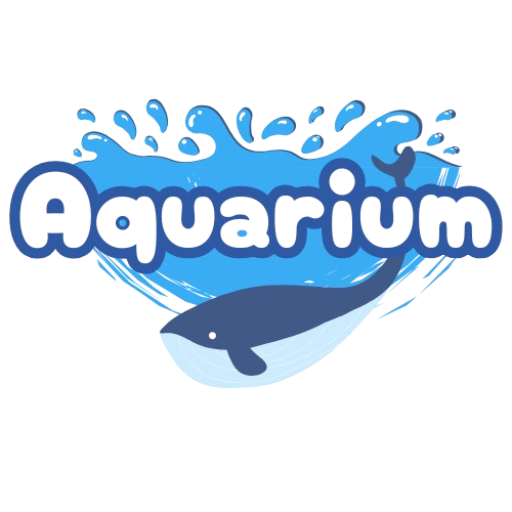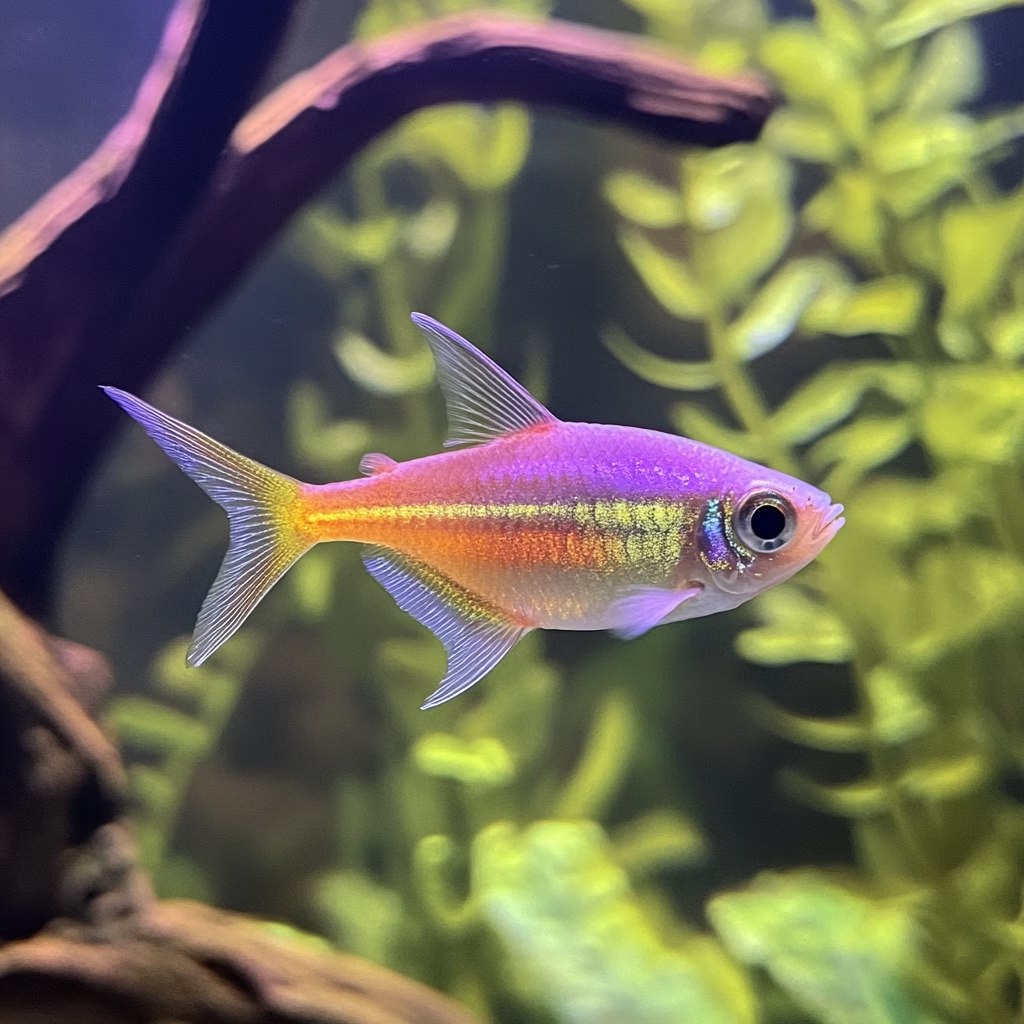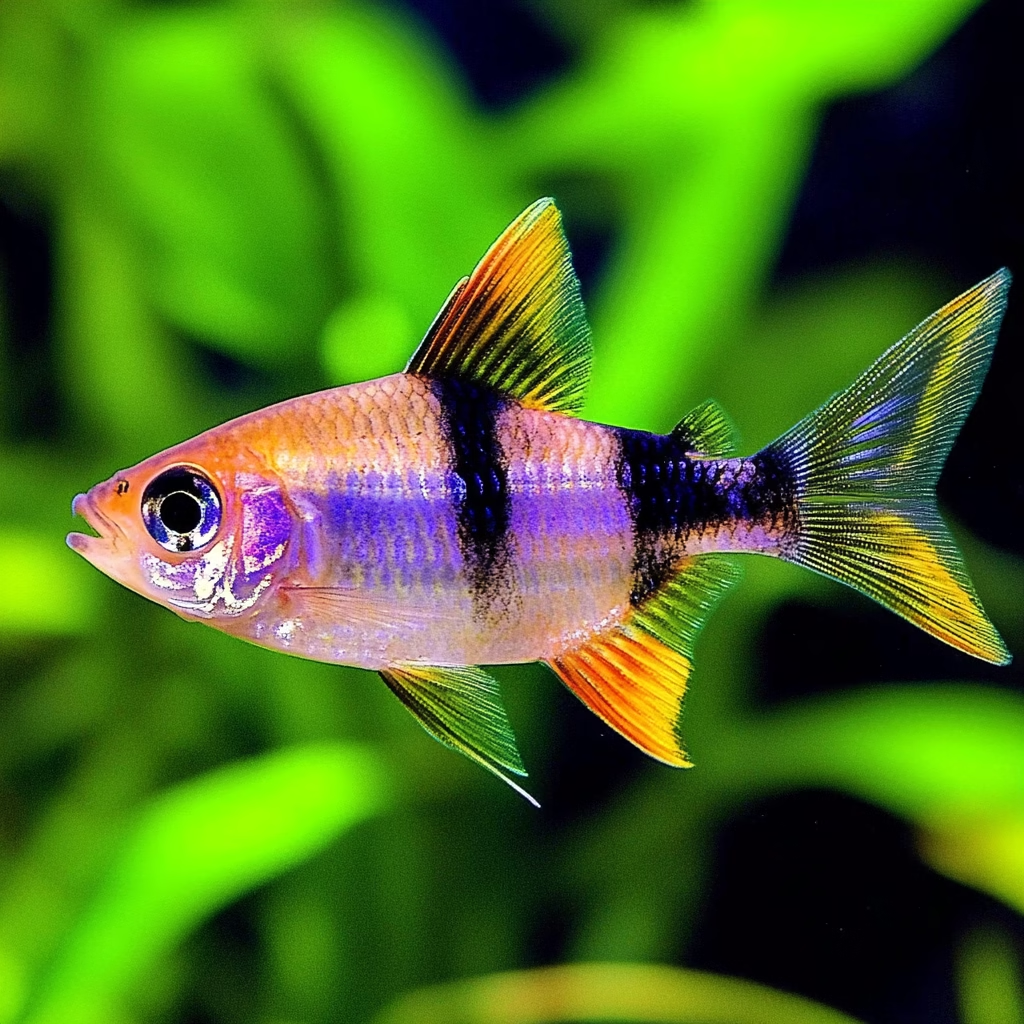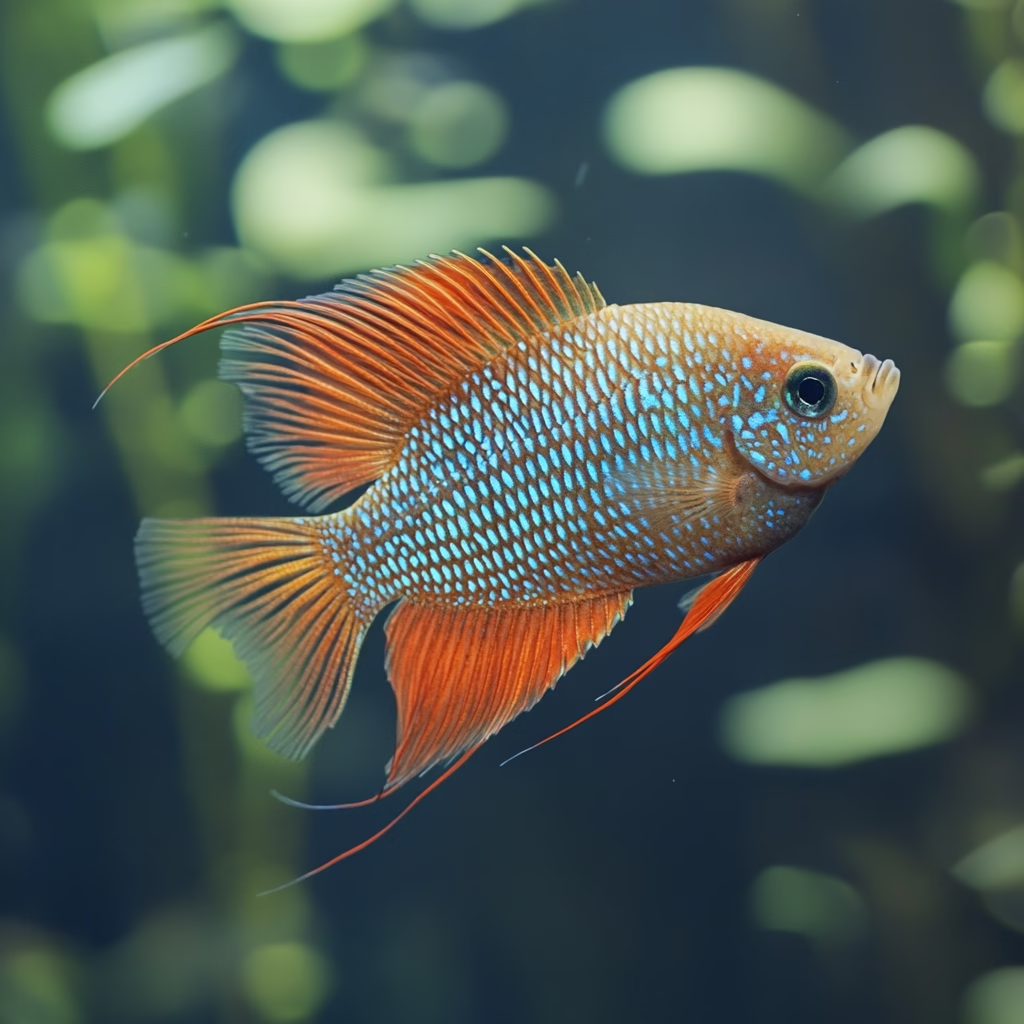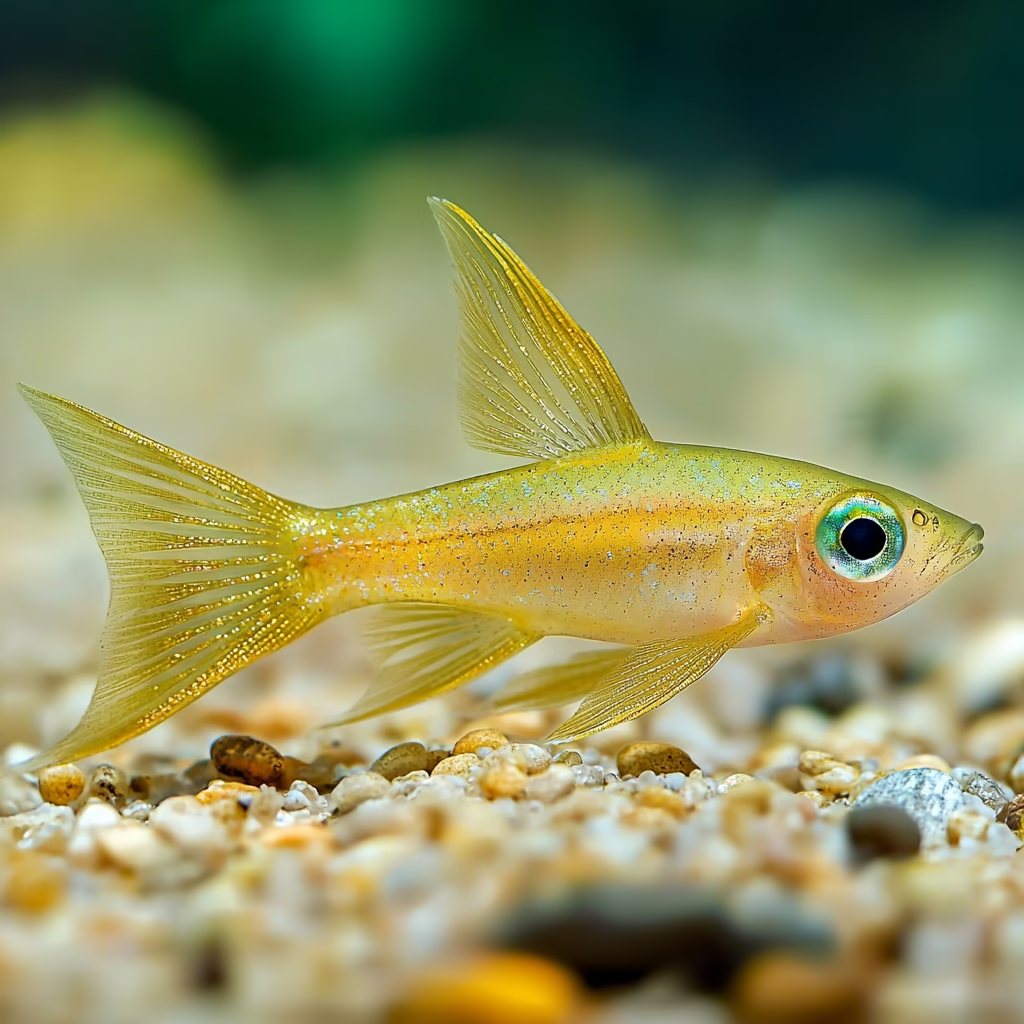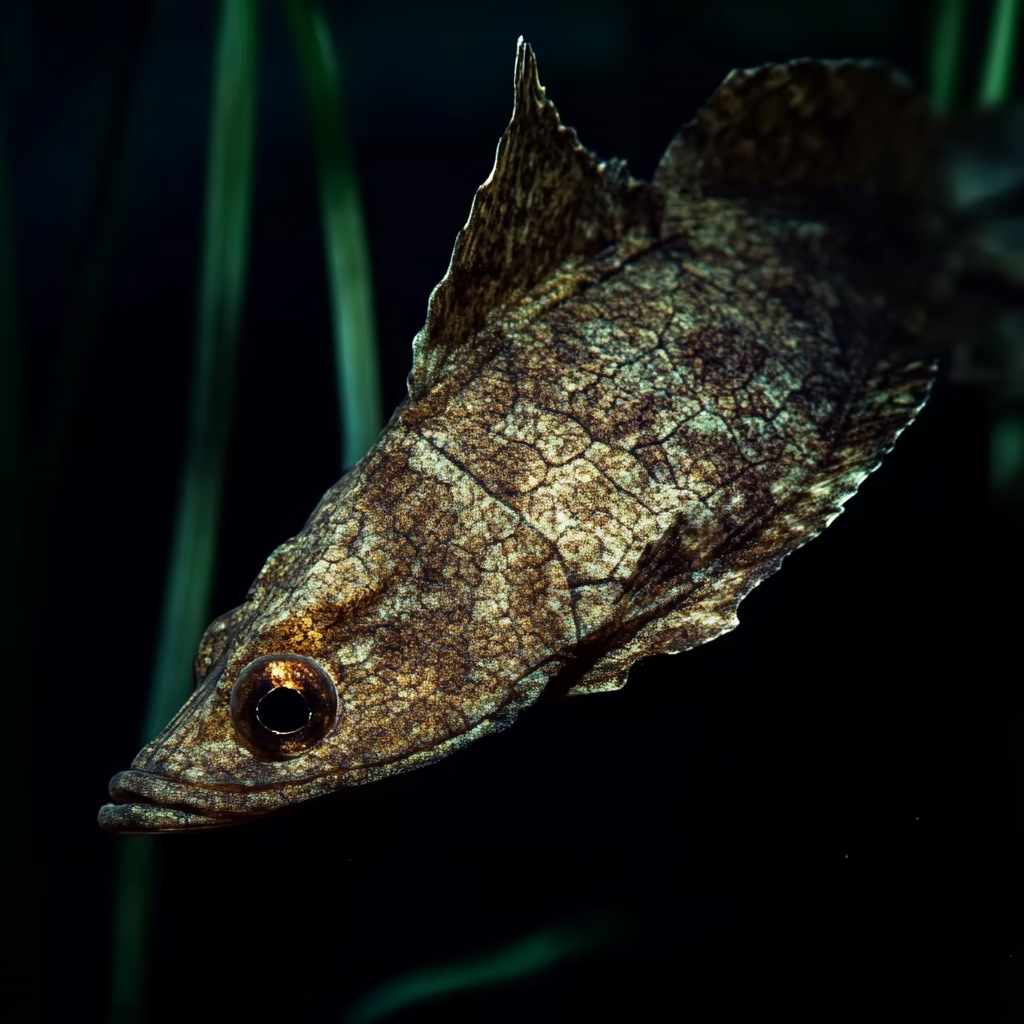Congo tetras belong to the Alestidae family and are closely related to African characins. First discovered in 1949 and introduced to the aquarium trade in the early 1950s, these fish quickly gained popularity due to their magnificent coloration and elegant, elongated body shape. Today, they remain a highly sought-after species for community aquariums, bringing a slice of the Congo River’s beauty into home fish tanks across the world.
Natural Habitat of the Congo Tetra
In the wild, Congo tetras inhabit the slow-moving, blackwater tributaries of the Congo River Basin in central Africa, primarily in the Democratic Republic of Congo. These waters are typically characterized by their soft acidity, warm temperatures, and tannin-stained appearance from the decomposing plant matter on the riverbed. The natural environment of the Congo tetra consists of densely vegetated areas with plenty of hiding spots created by submerged roots, fallen branches, and aquatic plants.
These waterways typically feature subdued lighting due to the dense forest canopy above, creating the perfect environment for these fish to thrive. The Congo tetra has evolved to navigate these dim conditions, which is reflected in their preferred aquarium setup. Understanding the natural habitat of the Congo tetra is essential for recreating suitable conditions in captivity and ensuring the health and vibrant coloration of these magnificent fish.
Physical Characteristics of the Congo Tetra
The Congo tetra stands out among freshwater aquarium fish due to its extraordinary appearance. Growing to approximately 3.5 inches (8.9 cm) in length, these fish possess an elongated, laterally compressed body with a deeply forked tail that enables swift, graceful movement through the water.
What truly distinguishes the Congo tetra, however, is its breathtaking iridescence. Males display a spectacular palette of colors that shift with movement and lighting conditions. Their scales reflect hues of blue, purple, gold, and green, creating a mesmerizing rainbow effect that seems to change as the fish swims. This iridescence is most prominent along the body, while the fins exhibit vibrant orange to reddish tones with striking white edging.
Sexual dimorphism is quite pronounced in Congo tetras:
- Males are larger, more colorful, and have extended fins, particularly the anal and dorsal fins that develop into elegant, flowing appendages as they mature.
- Females, while still attractive, are typically smaller with a rounder body shape and less dramatic finnage. Their coloration tends to be more subdued, displaying a silvery-blue body with less intense iridescence.
The Congo tetra’s appearance becomes increasingly impressive as the fish reaches maturity, with males developing their full splendor at around 1-2 years of age. Well-maintained specimens in optimal conditions will showcase the most vibrant coloration, making proper care essential for bringing out their true beauty.
Setting Up the Ideal Aquarium for Congo Tetras
Creating the perfect environment for Congo tetras involves replicating elements of their natural habitat while providing adequate space for their active swimming behavior. A successful Congo tetra aquarium setup should include the following essential components:
Tank Size and Configuration
For a small group of Congo tetras, a minimum tank size of 30 gallons (114 liters) is recommended. These fish are active swimmers that require horizontal space to thrive, so a longer tank is preferable to a taller one. For larger groups or community setups, consider a tank of at least 40-55 gallons (151-208 liters).
Water Parameters
Congo tetras thrive in specific water conditions that mirror their native environment:
- Temperature: 73-82°F (23-28°C)
- pH: 6.0-7.5, with 6.5-7.0 being optimal
- Water hardness: Soft to moderately hard (5-15 dGH)
- Filtration: Moderate flow rate that creates gentle current without turbulence
Lighting and Decoration
Congo tetras prefer subdued lighting that mimics the shadowy conditions of their natural habitat. Consider the following for an ideal setup:
- Moderate lighting with floating plants to diffuse brightness
- Dark substrate (sand or fine gravel) to enhance the fish’s colors
- Driftwood and bogwood to release tannins and provide hiding places
- Plant species like Anubias, Java fern, and Amazon sword to create a naturalistic environment
- Open swimming areas in the middle of the tank balanced with planted areas along the sides and back
Regular water changes of 25-30% every two weeks help maintain water quality and simulate the fresh water influx of their native rivers. Using a water conditioner that removes chlorine and chloramines is essential when performing water changes for Congo tetras.
Diet and Nutrition for Congo Tetras
Congo tetras are omnivorous by nature, requiring a varied diet to maintain their health and vibrant coloration. In the wild, they consume small insects, crustaceans, worms, and plant matter found in their native waterways. To replicate this diverse diet in captivity, aquarists should provide a combination of high-quality commercial foods and fresh supplements.
Recommended Feeding Regimen
A balanced diet for Congo tetras includes:
- High-quality flake or small pellet food specifically formulated for tropical fish as a daily staple
- Frozen or freeze-dried foods including bloodworms, brine shrimp, and daphnia 2-3 times per week
- Live foods such as mosquito larvae or small freshwater crustaceans as occasional treats
- Vegetable matter including blanched spinach, zucchini, or specialized algae wafers once weekly
For optimal health, Congo tetras should be fed small portions 2-3 times daily rather than a single large feeding. Only provide what they can consume in 2-3 minutes to prevent overfeeding and subsequent water quality issues. Maintaining this feeding schedule and varied diet will not only keep your Congo tetras healthy but also enhance their stunning coloration.
Foods rich in carotenoids are particularly beneficial for maintaining the vibrant hues of Congo tetras. Supplements containing astaxanthin or foods naturally high in this compound, such as krill, can intensify the red and orange tones in their fins.
Behavior and Social Dynamics of Congo Tetras
Congo tetras are quintessential schooling fish that display their most natural behavior when kept in groups. Understanding their social structure and temperament is crucial for maintaining a harmonious aquarium environment.
In their natural habitat, Congo tetras form large schools as a defense mechanism against predators. This schooling instinct remains strong in captivity, and these fish become noticeably more confident, active, and colorful when kept in appropriate groups. A minimum of six individuals is recommended, though groups of 8-12 will create a more impressive display and promote more natural behaviors.
Congo tetras occupy the middle to upper water levels of the aquarium, where they can be observed swimming in loose formation. Their movement pattern is characterized by elegant gliding interspersed with quick bursts of speed. During quiet periods, they may separate slightly but quickly regroup if startled.
Male Congo tetras engage in non-aggressive display behavior to establish hierarchy and attract females. This involves extending their fins and intensifying their coloration while performing a subtle side-to-side swimming pattern. This natural display behavior is fascinating to observe and indicates healthy, comfortable fish.
Despite their active nature, Congo tetras are peaceful community residents that rarely show aggression toward tank mates. Their gentle temperament makes them excellent additions to mixed-species aquariums with similarly non-aggressive fish.
Compatibility and Community Tank Mates
The peaceful nature of Congo tetras makes them ideal candidates for community aquariums. When selecting tank mates, focus on species that share similar water parameter requirements and non-aggressive temperaments. Compatible companions for Congo tetras include:
Recommended Tank Mates
- Other peaceful tetras such as Rummy Nose, Cardinal, or Lemon tetras
- Rasboras like Harlequin or Lambchop varieties
- Peaceful barbs including Cherry and Odessa barbs
- Small to medium-sized rainbowfish
- Peaceful bottom dwellers like Corydoras catfish or small Loricariids
- Dwarf gouramis or honey gouramis
- Non-aggressive African cichlids from similar regions, such as Kribs or Anomalochromis thomasi
Fish to Avoid
Congo tetras should not be housed with:
- Large, predatory species that might view them as prey
- Aggressive or fin-nipping fish like Tiger barbs or some cichlid species
- Very small nano fish that might be intimidated by the active swimming of Congo tetras
- Species requiring significantly different water parameters
When designing a community tank featuring Congo tetras, consider the entire ecosystem. Include algae eaters and bottom dwellers to maintain tank cleanliness, mid-water schooling fish for visual interest at different levels, and perhaps a centerpiece species with compatible requirements.
Breeding Congo Tetras in Captivity
Breeding Congo tetras represents a rewarding challenge for intermediate to advanced aquarists. While not impossible, successful breeding requires careful preparation and specific conditions to trigger spawning behavior.
Breeding Setup
A dedicated breeding tank of 20-30 gallons with the following parameters provides the best chance of success:
- Water temperature slightly elevated to 80-82°F (26-28°C)
- Very soft water (2-5 dGH)
- Acidic pH (6.0-6.5)
- Dense planting, particularly fine-leaved plants or spawning mops
- Subdued lighting
- Sponge filter for gentle filtration
Conditioning and Spawning
Begin by selecting a healthy, mature pair or group with a ratio of 2-3 males to each female. Condition the breeding stock with protein-rich live foods for 1-2 weeks before introducing them to the breeding tank.
Congo tetras are egg scatterers that release eggs among vegetation during spawning. After a complex courtship display by the males, the female will scatter 300-500 adhesive eggs that attach to plants or the spawning mop. At this point, it’s crucial to remove the adult fish, as they will consume the eggs.
Raising Fry
The eggs typically hatch within 24-36 hours, and the fry become free-swimming after 3-4 days. Initially, feed the tiny fry with infusoria or liquid fry food, gradually progressing to newly hatched brine shrimp as they grow. Maintain pristine water conditions through small, frequent water changes, being careful not to disturb the delicate fry.
Young Congo tetras grow relatively slowly, and it may take 8-12 months before they begin to show adult coloration. Patience is essential throughout this process, but the reward of raising these magnificent fish from eggs to adults is well worth the effort.
Health Considerations and Common Issues
Congo tetras are generally hardy fish when maintained in appropriate conditions, but like all aquarium species, they can experience health problems. Being aware of potential issues and providing preventative care is essential for long-term success with these beautiful fish.
Common health concerns include:
- Ich (White Spot Disease): Characterized by white spots resembling salt grains on the body and fins. Treat with appropriate medication and gradually increased water temperature.
- Fin Rot: Indicated by deteriorating fin edges, often resulting from poor water quality. Regular water changes and improved maintenance typically resolve mild cases.
- Nutritional Deficiencies: Inadequate diet can lead to faded coloration and reduced immunity. Provide varied, high-quality foods to prevent these issues.
- Stress-Related Problems: Symptoms include reduced activity, loss of appetite, and faded coloration. Address stress by maintaining stable water parameters, providing adequate hiding places, and keeping appropriate group sizes.
Preventative measures include:
- Regular water testing and maintenance
- Quarantining new fish before introduction
- Maintaining proper nutrition
- Avoiding overcrowding
- Prompt identification and treatment of any health issues
With proper care, Congo tetras typically live 3-5 years in captivity, with some well-maintained specimens reaching up to 8 years of age.
Conclusion: The Enduring Appeal of Congo Tetras
The Congo tetra stands as a testament to the natural beauty found in African waterways. Their shimmering, iridescent scales create a living rainbow that brings movement and color to any appropriately sized community aquarium. Despite being in the aquarium trade for over seven decades, these fish continue to captivate new generations of hobbyists with their elegant appearance and peaceful nature.
For aquarists willing to provide appropriate tank size, water conditions, and nutrition, Congo tetras offer a rewarding experience that combines the pleasure of keeping a schooling species with the visual impact of truly spectacular coloration. Whether as the centerpiece of a dedicated African-themed aquarium or as part of a carefully selected community tank, these fish represent one of the most beautiful freshwater species available to hobbyists today.
The Congo tetra’s continued popularity in the aquarium hobby speaks to its perfect balance of beauty, interesting behavior, and manageable care requirements. By understanding and providing for the specific needs of these remarkable fish, aquarists can enjoy their vibrant presence for years to come while helping to maintain interest in the preservation of the unique aquatic ecosystems from which they originate.
